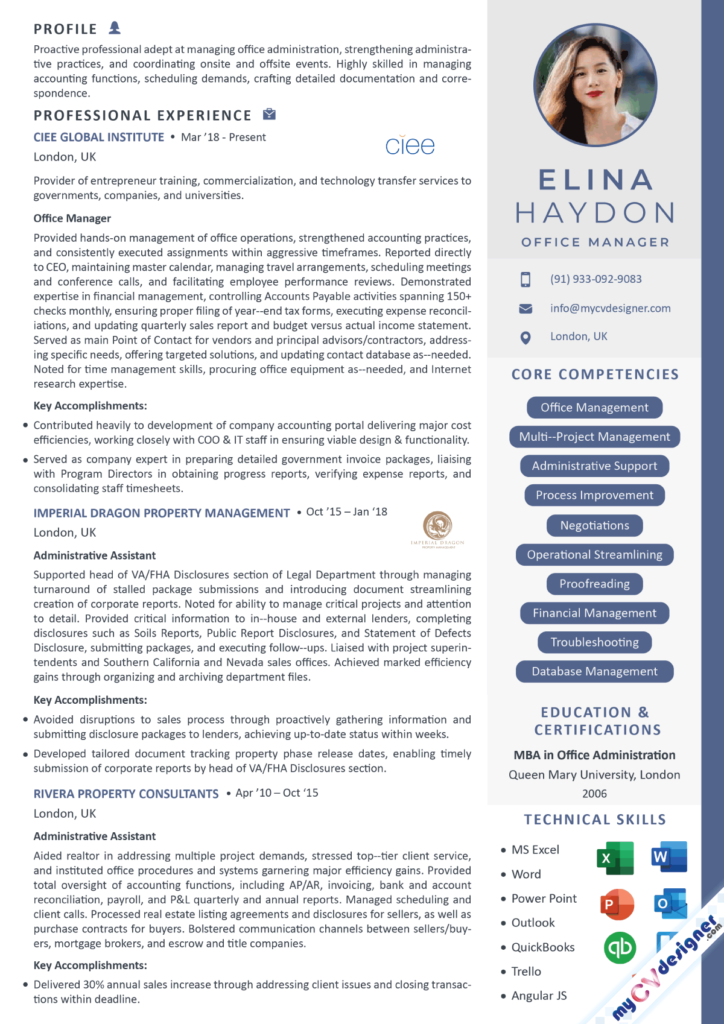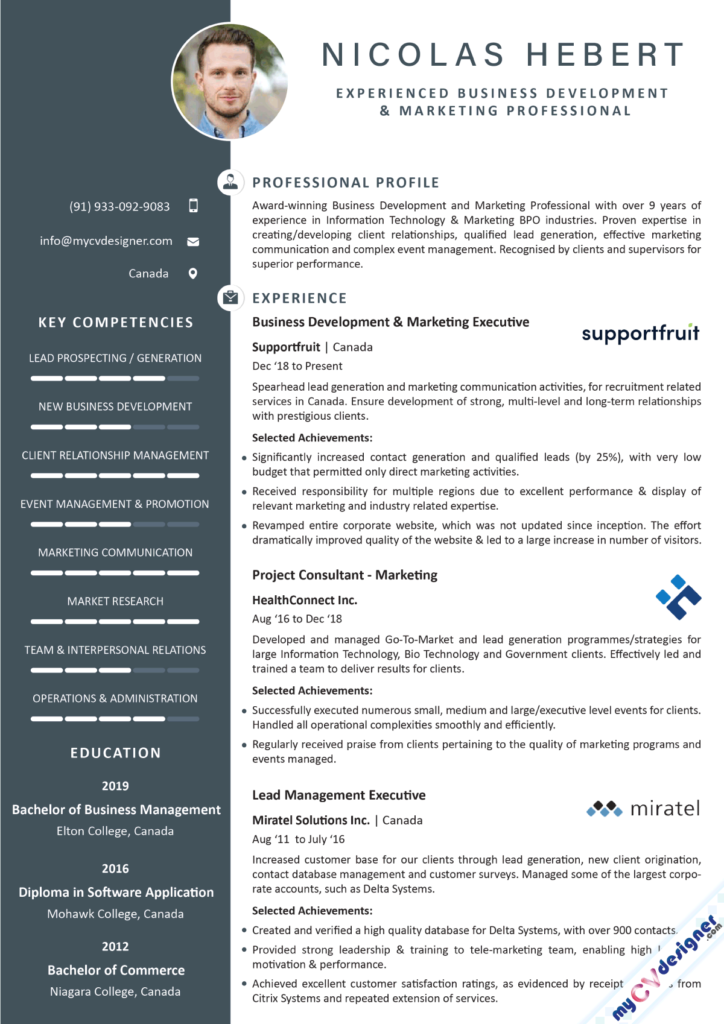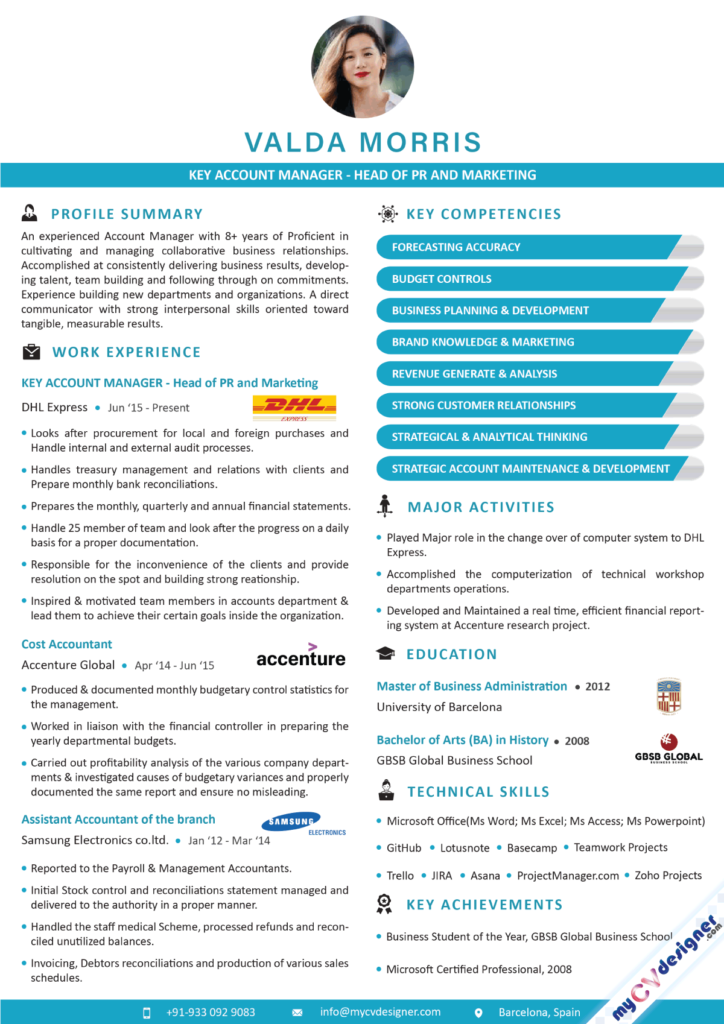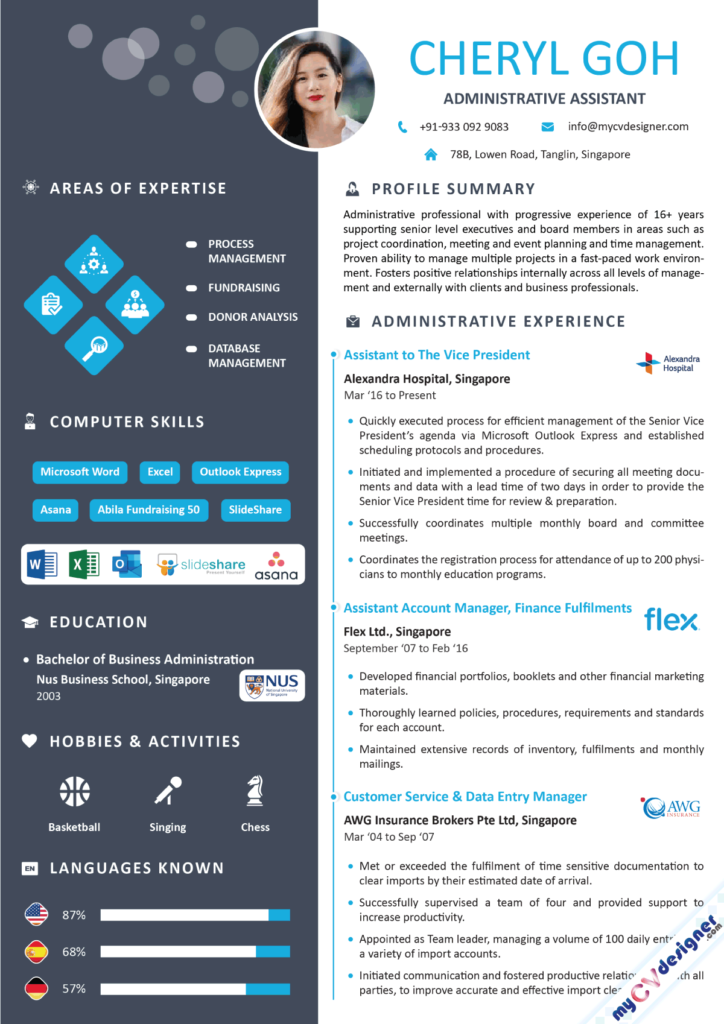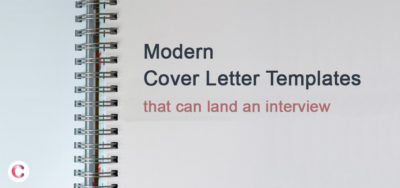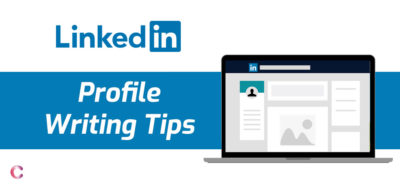A job confirmation letter is a formal document that states the employment confirmation of a candidate. An employer uses this...
Read More- Home
- Resume Samples
- Assistant Professor Resume Samples
Assistant Professor Resume Samples
Are you an Assistant Professor or want to join an organization as this position? Know their job roles and responsibilities and some tips for writing Assistant Professor resumes. Check these Assistant Professor resume samples and book your professional resume for the best opportunity.
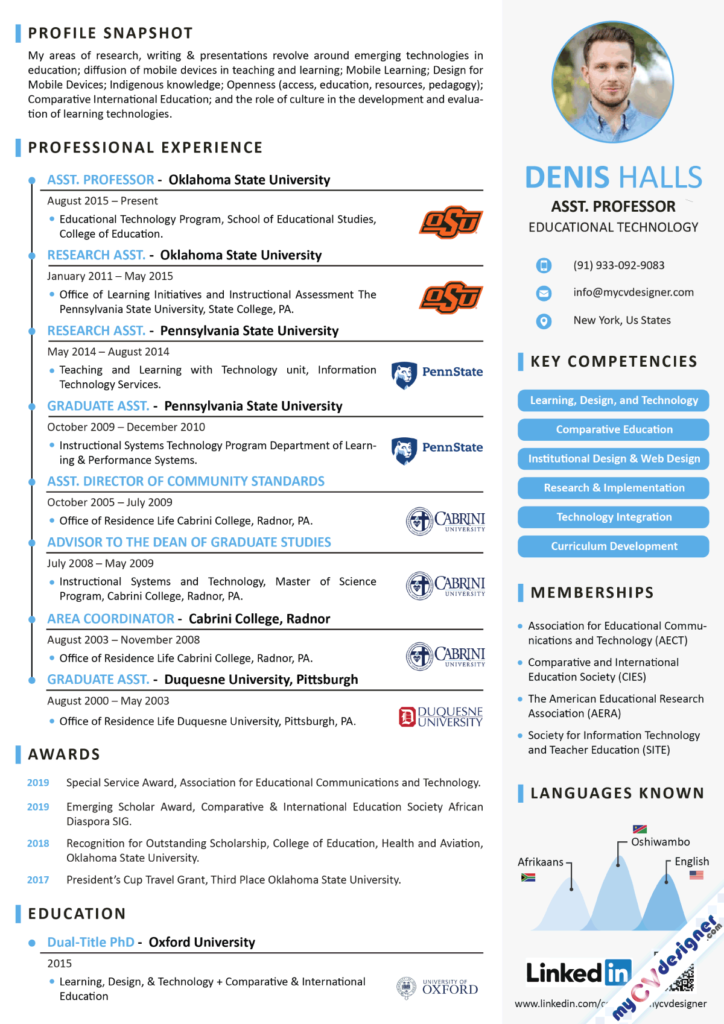
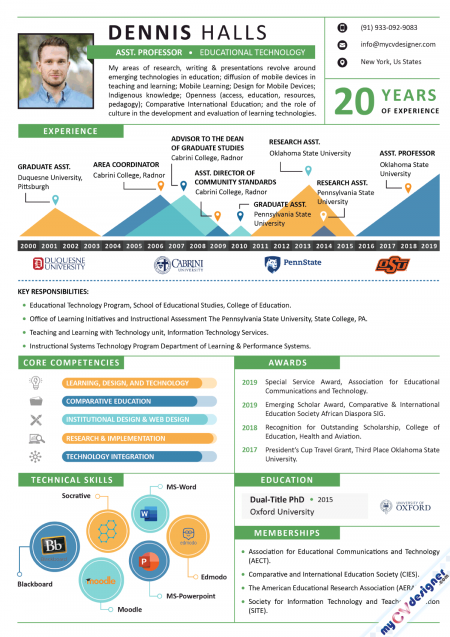
Related Resumes and Cover Letters
Related Resumes
Assistant Professor Job Description:
What does an Assistant Professor do?
An assistant professor is an academic rank in universities/colleges. The rank is usually below that of an associate professor and equivalent to the position of a lecturer. There are many responsibilities of assistant professors in the academic institution where they are employed. Not only do they teach, but they also research to publish in academic journals and perform administrative duties such as making admission decisions. They would, therefore, have to manage all these duties simultaneously.
Primarily, they help full-time professors and take on a portion of their workload. Assistant professors teach a requisite number of classes and are responsible for designing courses and grading students’ assignments. They guide and supervise graduate students alongside conducting academic studies with them. They may also serve on several university committees and participate in departmental meetings.
Because of the highly academic nature of the position, a doctoral degree is usually expected. In some cases, you might also be required to have experience as a postdoctoral researcher. In the US, the position of an assistant professor is the first one in the tenure track. With enough experience in the field, they can climb up the ranks to become fully tenured professors.
It is important to note that this is a highly competitive position as fewer and fewer universities are hiring assistant professors these days. It is much cheaper for them to hire adjunct professors who only work part-time. For this reason, only around 20% of Ph.D. graduates get a tenure-track assistant professorship. It’s slightly easier to go down a non-tenure track, although this offers lesser job security than a tenure-track position.
Those who thrive in high-pressure, fast-paced, high-workload, and competitive work environments are best suited for this job. They must have a passion for sharing their knowledge as well as expanding it, and have the ability to learn from their senior professors.
Responsibilities of Assistant Professor:
You’ll have various responsibilities as an assistant professor and the exact duties depend on the university where you are employed. Your responsibilities can be categorized into three sections: teaching, research, and scholarship and administrative duties.
Teaching
- Academically supporting professors and other staff
- Developing suitable instructional methods based on pedagogical research to ensure that your teaching is highly effective
- Preparing high-quality learning materials for students, especially by incorporating technology
- Conducting other learning activities such as tutorials, remedial classes, workshops, and clinical sessions
- Contributing to the accreditation of the subjects that you teach, if necessary
- Assisting with departmental duties such as counselling students in that department
- Teaching, supervising and providing guidance to undergraduate and graduate students (you would also be expected to be available to students out of class and answer their doubts via email or text)
- Keeping professors and heads of department up-to-date on the progress of students and compiling statistics (e.g. average GPA) for your class
- Obtaining feedback from students, colleagues, and seniors and making changes to your instruction based on this feedback
- Supporting undergraduate and graduate research by supervising students’ research projects
- Coming up with ideas for, designing and supervising other programs for students, such as career-related programs
Research and scholarship
- Conducting research in your field and publishing papers in journals
- Writing proposals for grants to obtain funding for research
- Participating in research projects and joining research teams whenever possible
- Participating in learning sessions for improving research methods and skills
- Providing recommendations to universities for improving their research
Administrative duties and professional contributions
- Adhering to university policies
- Hiring new teaching assistants and other junior staff and training and mentoring them
- Representing your university at conferences and other events and delivering presentations about your research
- Attending departmental meetings to discuss and come up with solutions for various issues
Expectations of the employers:
Because of the highly competitive nature of this position, you are required to jump many hoops before you can even apply to become an assistant professor. The following are the academic qualifications, hard and soft skills, and experiences that you are expected to have.
- Most colleges and universities require a Ph.D. in the field you want to teach and conduct research in. Depending on whether you’re doing your studies full-time or part-time, it may take between 5 to 7 years. There are some schools for which having a master’s degree would be sufficient, but the monetary and non-monetary benefits at these institutions are much worse.
- It’s also highly important that you have teaching experience in a university setting. You’ll have plenty of opportunities to gain teaching experience during your master’s and/or Ph.D. studies as well as during your postdoctoral research time. You can become a graduate student instructor (GSI) or a teaching assistant (TA).
- Depending on the field that you’re teaching in, you might even be required to obtain a professional certification. Some examples of fields that require you to have a certification or license are accounting, medicine, and education. You don’t need a license to teach at the college or university level.
- As we’ve already discussed, research is a crucial component of your job as an assistant professor. Universities are looking to hire talented researchers who would solve global problems, further the knowledge in the field, and contribute to their prestige. This is why I already have published your research papers in a prestigious journal.
- To succeed as a researcher, you’ll also need excellent problem-solving, research, analytical, and creative thinking skills. To succeed as a teacher, you must have strong interpersonal and communication skills.
Common Skills:
- Microsoft Office
- Lesson Planning
- Effective Teaching
- Written Communication
- Presentation Skills
- Public Speaking
- Encouragement Skills
- Delegation & Multitasking
Common Certifications:
- Good Academic Record
- Master’s / Graduate Degree
- National Eligibility Test (NET)
- Certificate in College Teaching (CCT)
- Diplomate of National Board (DNB)
- Research Experience
- Teachers of English to Speakers of Other Languages (TESOL)
Tips for Writing Assistant Professor Resume:
It is not enough to have the right qualifications, you must also distill your accomplishments and organize them in the right manner in your resume. However, doing this is not an easy task as you may have questions about which skills, qualifications, and experiences to include in your resume and how to describe each of them. Sometimes, a recent graduate or fresher makes some common resume mistakes, that costs the job for them.
That is why we’ve created this guide with some resumes for assistant professors. These assistant professor resume samples are developed to represent how a modern resume for this job role should look like. Are you interested in an assistant professor position after reading the job description and responsibilities sections above? Do you think you have the ability to meet and go beyond your employer’s expectations? If so, we think you are ready to take the next step and learn about how to write the perfect resume for an assistant professor’s resume.
1. Emphasize strong analytical and verbal reasoning skills.
Your reasoning skills are one of the most important skills you’ll need to acquire to become an assistant professor. You will be applying these skills in every one of your roles- from your role as a teacher (as you will be preparing for your lectures, which requires verbal communication) to undertaking research (as you will be going through and analyzing literature on the topic of your research). Hence, make sure that you put these skills under the skills section of your resume and mention them even when you’re describing your job.
For example, if you were a research assistant before, mention that you’ve developed these skills through that job. Make sure to provide specific examples of things you’ve accomplished (e.g. published my name on a highly-cited paper) so that your achievements are more convincing.
2. Write in detail about your teaching experiences.
As an assistant professor, you will be expected to give equal importance to your research and teaching duties. Hence, you will have to prove your competence as a teacher to not only show that you are qualified for the job but also distinguish yourself from your competitors.
One example of a teaching experience you might have had early in your career is a graduate student instructor (GSI). If you have been a GSI during your graduate or undergraduate (even more impressive!) years, mention it. Talk about the various tasks you completed under this role.
Another popular teaching experience for those who are interested in going down this path is a teaching assistant. You have the opportunity to become a TA when you’re doing your Master’s or Ph.D.
Besides, you can also talk about the teaching experiences you’ve had in a non-academic setting. For instance, if you were a part of a volunteering program in which you taught underprivileged children, you can mention it.
3. Use your professional summary to impress the reader and hook them in.
professional summary is a 3-5 sentence statement at the top of your resume that summarizes the reasons why you are ideal for this job. In other words, it is your unique selling proposition meant to convince your employer that you are more qualified than other applicants for this job.
In this summary, use appropriate adjectives to describe your skills (e.g. seasoned lecturer with thorough knowledge of the field). To fit a lot of information, you don’t have to write in full sentences. Here’s an example of a few lines you can include in your academic summary:
“Seasoned lecturer with six years of experience in teaching, supervising and counseling undergraduate and graduate students. Thorough knowledge of microeconomics and expertise in the area of game theory.”
4. Use keywords that are related to your job.
Your resume is first screened by software that helps recruiters shortlist candidates. It is programmed to look for certain keywords to determine if the candidate has the right qualifications for the job. You can use this fact to your advantage by including those keywords that would make it more likely that you’re shortlisted.
For the position of an assistant professor, the following are some of these keywords:
- Lecturing
- Teaching
- Supervising
- Research
- Participated
- Assisted [the university or professors]
Use these keywords frequently throughout your resume.
5. Choose the right format for your resume (usually the reverse chronological).
- In the reverse chronological resume, you list all your jobs in the reverse chronological order. Therefore, you begin with your most recent job then list all the significant ones you’ve had before it.
- In the functional resume, you don’t emphasize your work experience but rather show your skills and abilities. Instead of the job title, you talk about the various tasks and projects you’ve completed under a particular skill (e.g. Lecturing).
- The hybrid format, as the name suggests, is a combination of these two formats. You start by listing and describing all of the skills that are relevant to the job, then create a section for your job history. In this section, you can list all your jobs in the reverse-chronological format.
Each format has its strengths and weaknesses. For instance, if your career experience has been relatively conventional- you’ve constantly been employed at a company and your job experience is in the field of academia and teaching- the reverse-chronological format would suit you. It’s also the most commonly used and therefore the expected format.
However, for those with more unconventional employment history, the other two might be better options. For example, if you haven’t had a job for an extended period or have been freelancing all your life, the functional or hybrid resume formats, because of their emphasis on skills, can better show what you have to offer. You can check these assistant professor resume templates for a better view on this. You can also choose one of the top 10 resume templates for your resume.
Other Great Resumes & Cover Letters from related Industry:
Resume Samples:
Resume Samples:
Related Articles
5 Best Resume Designs and Principles to Follow in 2022
If you are looking for some of the best resume designs, I am pretty sure you are very much serious...
Read MoreModern Cover Letter Template For a Resume That Can Land an Interview
What is a Cover Letter? How modern Cover Letter template for a Resume can land an interview for you? A...
Read MoreImportance of Choosing a Professional Resume Maker for Designing Your CV
Professional resume makers make resumes that play a crucial role in influencing job recruiters. At present times, when high competition...
Read MoreTop Offbeat Career Opportunities in 2021
There are many offbeat career opportunities that a candidate can choose for their career, but in the year 2021, the...
Read MoreHow to Brand Yourself to Boost Chances of Getting Hired
If you want to be successful in your professional life, you need to build a strong image or brand to...
Read MoreLinkedIn Profile Writing Tips for 2021
No matter what your job field is, you must have a strong, persuasive, and optimized LinkedIn profile to get noticed...
Read MoreWant A Job In 2021? Attractive Text Resume Templates Can Help
In 2021, getting a suitable job is difficult. The COVID-19 pandemic has brought a massive fall in the global economy....
Read More